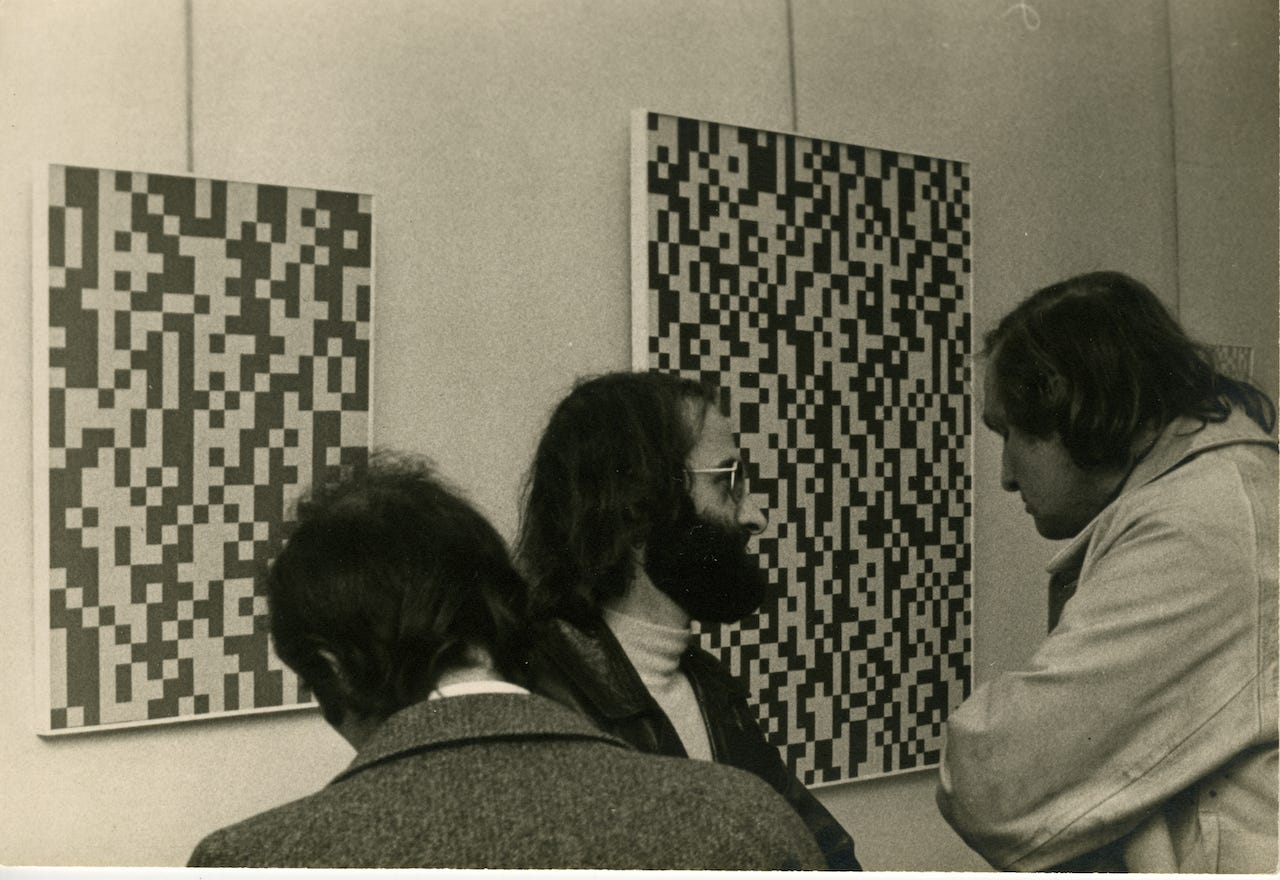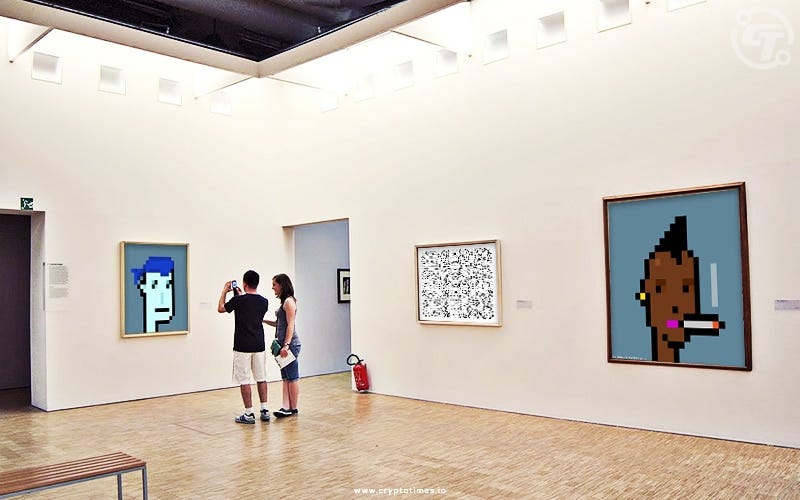Collecting Digital Art
The Early Years and Why They Matter: The First in An On-Going Series About Avant Garde Art & The Reason for Launching This Publication
Lately more people – collectors and curators – have become interested in the pioneers of digital art. It has taken time. Decades, in fact. Artists working in the field started as early as the late 1950s, with the movement gaining traction through the 1960s and 1970s, only to be ridiculed and forgotten.
Avant-garde art movements often go through this cycle. Initial rejection, oblivion and, finally, veneration.
Jean-Claude Marquette (center) at an exhibition of his work in the early 1970s
It is only the advent of NFTs and other forums for contemporary digital art as vehicles for monetizing creativity that collectors and curators -- the bulkhead of them – have taken notice.
An example is the impressive room opened earlier this year at the Centre Pompidou to showcase its collection of NFTs. There were articles in the art magazines and important daily papers. And the Centre publicized their NFTs with splashy press campaigns and highly visible internet posts.
The Pompidou’s NFT exhibition room
Meanwhile, very quietly, the Centre last year also opened a “hallway” to show works from the early 1970s by the groundbreaking Groupe Art et Informatique de Vincennes (Art and Computer Group of Vincennes), or GAIV, with works by Monique Nahas and Hervé Huitric, Jean-Claude Marquette, Jacques Dupré, et al.
The “hallway” for the GAIV at the Pompidou Centre
In and of itself, this was taken as a triumph for the members of the group. Even for the courageous curator behind it, the achievement was monumental and fraught with resistance from certain corridors.
We, nonetheless, should be clear. In no way does it reflect the historical place that these artists occupy.
What it does show is the current market value of the work— undervalued.
Andy Warhol — to paraphrase — once said art and the art market are two different things.
The size and placement of the two rooms alone show what side the museum has taken.
But would the recent – more monetarily glorified works -- even exist without the still largely under appreciated work of the earliest practitioners?
Should difficult, intellectual work be overshadowed by work supplying viewers immediate gratification?
Can we forget Picasso when we mention George Condo?
I want to tell my story – our gallery’s story – about our adventure of researching, collecting, promoting and selling seminal artists from this movement over the last decade.
The articles that will be published will offer a guide to collecting in a field that for many remains unclear– Who is important? Which artists mattered? How are prices evolving? Simply put, how should one collect?
I know much confusion reigns. Curators are confounded. They are trying to decipher a field for which the history is being written today — five decades after the fact.
This is a big problem and big responsibility. Let’s admit it, museums usually create the narrative of importance in art.
To paint a fair picture, some artists are being overlooked and others given too much credit.
I have my opinions and not everyone will agree with me.
But once the narrative is written – it will be set in stone. Revision will be difficult.
That’s why I’ve decided it is time for us to give our viewpoint on the subject.
I believe that we have come to a point in the history of our gallery where our knowledge has developed to a level at which it’s worth being shared. We want to fight the good fight. To help promote this field. To assist collectors who they should be considering. And to do it transparently, with a level eye.
Every week an article will be published on an artist or a theme. There will be lists and there will be recommendations.
I have chosen to offer these articles on a small paid subscription-only basis for the simple reason that I believe this information should be limited to only those who care.
Thank you, and if you choose to subscribe I sincerely hope that this will open dialogue on this subject for which we are passionate.
RCM Galerie’s current exhibition: from left, Ken Knowlton, Vera Molnar, Jean-Claude Marquette and Joan Truckenbrod







